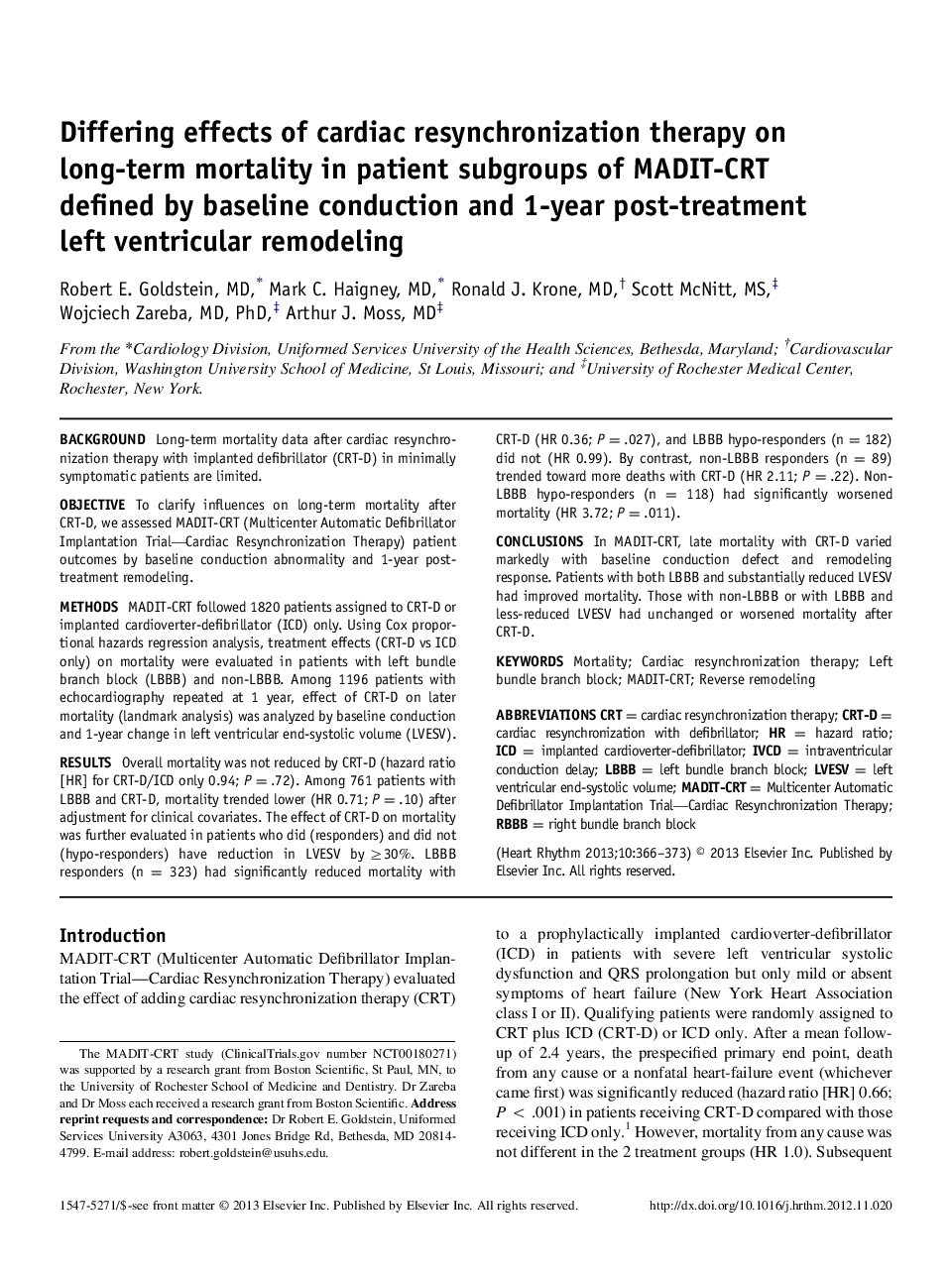| کد مقاله | کد نشریه | سال انتشار | مقاله انگلیسی | نسخه تمام متن |
|---|---|---|---|---|
| 2922230 | 1175838 | 2013 | 8 صفحه PDF | دانلود رایگان |

BackgroundLong-term mortality data after cardiac resynchronization therapy with implanted defibrillator (CRT-D) in minimally symptomatic patients are limited.ObjectiveTo clarify influences on long-term mortality after CRT-D, we assessed MADIT-CRT (Multicenter Automatic Defibrillator Implantation Trial—Cardiac Resynchronization Therapy) patient outcomes by baseline conduction abnormality and 1-year posttreatment remodeling.MethodsMADIT-CRT followed 1820 patients assigned to CRT-D or implanted cardioverter-defibrillator (ICD) only. Using Cox proportional hazards regression analysis, treatment effects (CRT-D vs ICD only) on mortality were evaluated in patients with left bundle branch block (LBBB) and non-LBBB. Among 1196 patients with echocardiography repeated at 1 year, effect of CRT-D on later mortality (landmark analysis) was analyzed by baseline conduction and 1-year change in left ventricular end-systolic volume (LVESV).ResultsOverall mortality was not reduced by CRT-D (hazard ratio [HR] for CRT-D/ICD only 0.94; P = .72). Among 761 patients with LBBB and CRT-D, mortality trended lower (HR 0.71; P = .10) after adjustment for clinical covariates. The effect of CRT-D on mortality was further evaluated in patients who did (responders) and did not (hypo-responders) have reduction in LVESV by≥30%. LBBB responders (n = 323) had significantly reduced mortality with CRT-D (HR 0.36; P = .027), and LBBB hypo-responders (n = 182) did not (HR 0.99). By contrast, non-LBBB responders (n = 89) trended toward more deaths with CRT-D (HR 2.11; P = .22). Non-LBBB hypo-responders (n = 118) had significantly worsened mortality (HR 3.72; P =.011).ConclusionsIn MADIT-CRT, late mortality with CRT-D varied markedly with baseline conduction defect and remodeling response. Patients with both LBBB and substantially reduced LVESV had improved mortality. Those with non-LBBB or with LBBB and less-reduced LVESV had unchanged or worsened mortality after CRT-D.
Journal: Heart Rhythm - Volume 10, Issue 3, March 2013, Pages 366–373